Birds
Media

Species Types
Scientific Name
Chaetura pelagica
Description
About the only way to see chimney swifts — unless you look in a chimney flue — is while they’re flying. They look like “flying cigars,” with long narrow wings, and chitter loudly as they fly.
Media

Species Types
Scientific Name
Quiscalus mexicanus
Description
The great-tailed grackle occurs mostly in western parts of Missouri, which is on the northeastern edge of its range. This blackbird’s long, V-shaped tail is distinctive, as is its song of whistles, clacks, chucks, and clicks.
Media
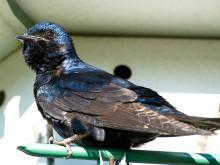
Species Types
Scientific Name
Progne subis
Description
Generations of Americans have greeted the annual return of purple martins, with their cheerful calls, graceful flight, and faithful reappearance each year. But martin populations have been declining. Find out what you can do to help these agile fliers.
Media
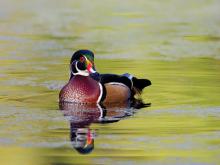
Species Types
Scientific Name
Aix sponsa
Description
The wood duck is one of the world's most beautiful waterfowl. It is equally famous for being a cavity nester in hollow trees, sometimes 60 feet above the ground and a mile away from water.
Media
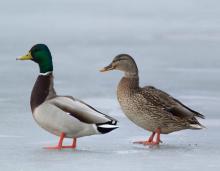
Species Types
Scientific Name
Anas platyrhynchos
Description
The mallard is probably the most familiar duck in all of North America. The male has a green head and chestnut breast. Both sexes have a blue speculum (wing patch) bordered on both sides by white.
Media
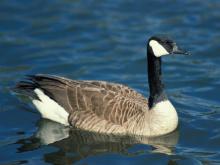
Species Types
Scientific Name
Branta canadensis
Description
Canada geese are recognizable by their brownish bodies, black necks and heads, and a distinctive broad white patch that runs beneath their heads from ear to ear.
Media
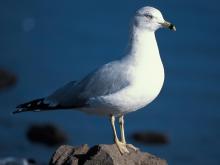
Species Types
Scientific Name
Larus delawarensis
Description
The ring-billed gull is Missouri’s most common gull. Adults can be told from our other most common gulls by their yellow legs and yellow bill with a black ring near the tip.
Media

Species Types
Scientific Name
Chen caerulescens
Description
The snow goose has two color forms: white and blue. The “blue goose” was once considered a separate species. Both share the distinctive feature of a black “lipstick” streak along the edge of the bill.
Media
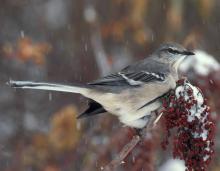
Species Types
Scientific Name
Mimus polyglottos
Description
One of the best-known U.S. songbirds, the northern mockingbird can sing endlessly, night and day, repeating phrases from the songs of other birds. Its white wing patches are conspicuous in flight.
Media
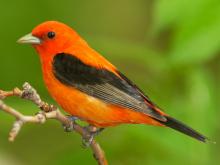
Species Types
Scientific Name
Piranga olivacea
Description
In summer, scarlet tanagers feed on insects and fruit in the canopy of oak-hickory forests and in large shade trees of the eastern U.S. and southern Canada.
See Also







Media

Species Types
Scientific Name
Hemaris diffinis
Description
The snowberry clearwing is a moth that confuses people because it looks like a bumblebee and flies like a hummingbird!
Media

Species Types
Scientific Name
Hyles lineata
Description
The white-lined sphinx moth sometimes confuses people because it flies, hovers, and eats from flowers like a hummingbird. The adults often fly during daylight hours as well as in the night and are often found at lights.
Media

Species Types
Scientific Name
Darapsa myron
Description
The Virginia creeper sphinx moth is common in woods and brushy areas and comes to lights at night. The larvae eat Virginia creeper and grape leaves.
Media

Species Types
Scientific Name
Perimyotis subflavus (formerly Pipistrellus subflavus)
Description
Tri-colored bats, formerly called eastern pipistrelles, are relatively small and look pale yellowish or pale reddish brown. The main hairs are dark gray at the base, broadly banded with yellowish brown, and tipped with dark brown.
Media

Species Types
Scientific Name
Myotis grisescens
Description
Gray myotises are difficult to distinguish from other mouse-eared bats. A key identifying feature of the gray myotis is that its wing is attached to the ankle and not at the base of the toes. It’s an endangered species.
Media

Species Types
Scientific Name
Myotis lucifugus
Description
The little brown myotis (little brown bat) is one of our most common bats, but populations are declining. White-nose syndrome has taken a heavy toll in northeastern states. This species is now listed as vulnerable across its range.
Media

Species Types
Scientific Name
Myotis sodalis
Description
The Indiana myotis, or Indiana bat, summers along streams and rivers in north Missouri, raising its young under the bark of certain trees. It is an endangered species.
About Birds in Missouri
About 350 species of birds are likely to be seen in Missouri, though nearly 400 have been recorded within our borders. Most people know a bird when they see one — it has feathers, wings, and a bill. Birds are warm-blooded, and most species can fly. Many migrate hundreds or thousands of miles. Birds lay hard-shelled eggs (often in a nest), and the parents care for the young. Many communicate with songs and calls.





















